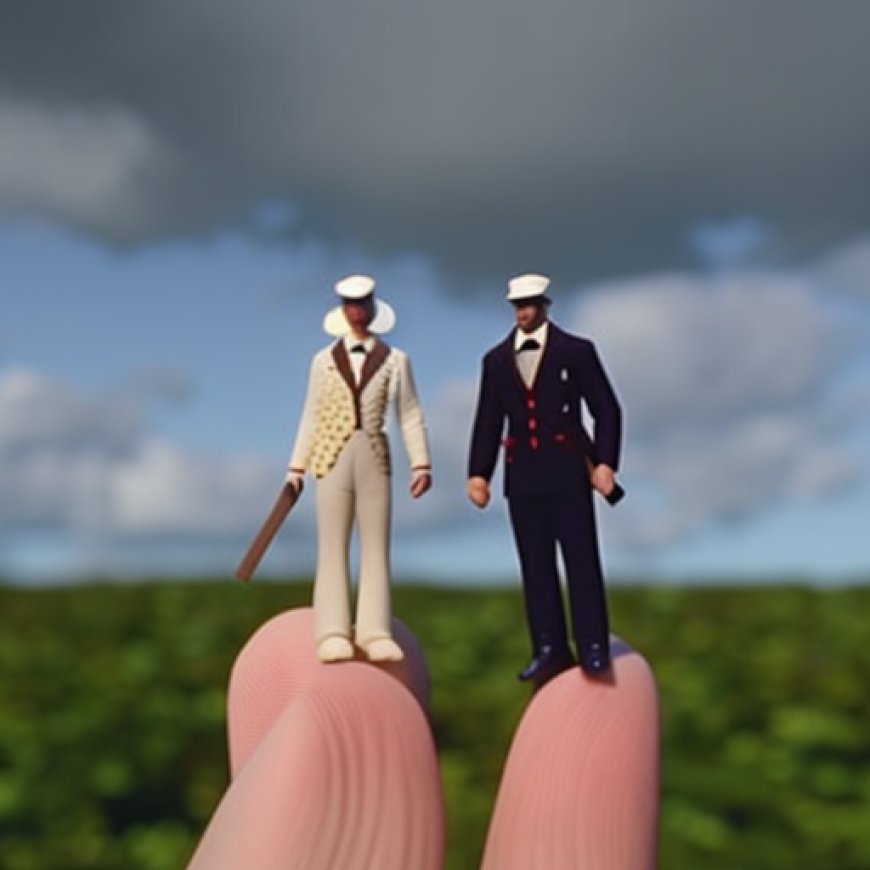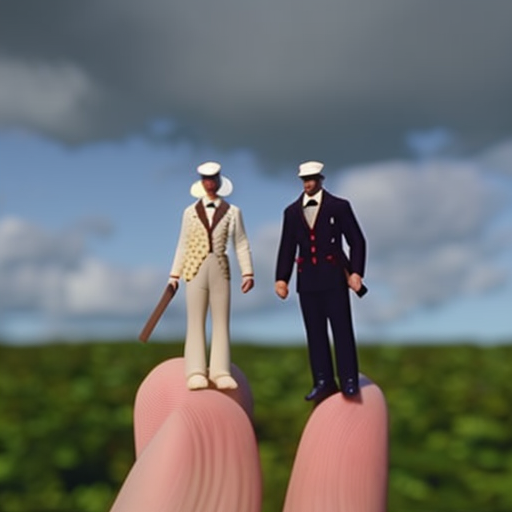Then and Now: How the AIDS Crisis Changed Queer Storytelling
Then and Now: How the AIDS Crisis Changed Queer Storytelling Literary Hub


In two new novels, intense friendships—and the romantic possibilities they might hold for the characters—are stirred up by the avenues and alleyways of the cities they’re set in: turn-of-the-millennium Berlin in I Make Envy on Your Disco, and WW1-era Paris in The Titanic Survivors Book Club.
In Berlin, an art advisor finds himself lost in his own indecision over a broken relationship back home in New York; he seeks solace among the city’s eccentrics and club kids who, despite their own doubt and wandering, seem to him to have intuited something essential about their haphazard directions. And in Paris, a bookseller becomes part of a trio of ersatz Titanic survivors who bond over their guilt in street cafés and saloons, until the trio becomes a triangle, intensifying with longing and disappointment.
Timothy Schaffert, the author of The Titanic Survivors Book Club, and Eric Schnall, author I Make Envy on Your Disco, discussed the stories of queer friendship and unrequited love that have inspired their own work.
*
Timothy Schaffert:
You’ve worked in theater for a number of years, you’ve won a Tony, and you’ve written a novel—you’ve developed a career based on narrative, in a sense. Queer relationships, love, romance, connection—how have those narratives changed in the time that you’ve been telling stories?
Eric Schnall:
I love this question. I’ve worked on and off Broadway since 1996, mostly on plays. However, I was fortunate enough to work on two musicals, each of them landmarks. I was the assistant to the producers of Rent for its first three years on Broadway, and two decades later I won the Tony you mentioned as one of the producers of the Broadway revival of Hedwig and the Angry Inch. I was also Hedwig’s marketing director, so I was in deep.
Each of those musicals are aggressively queer in the best way, and so different from each other. But they share a few things in common—first of all, they have enormous hearts. And secondly, they have a universality that made them into long-running hits. I think my years on both Rent and Hedwig burrowed into my soul, and showed me you could have queer characters and storytelling that connect with a wide audience because they are just so good, with themes that enabled them to transcend any boxes.
When I began I Make Envy on Your Disco, I was interested in writing from the perspective of a partnered gay man who is maybe on the surface a bit vanilla and uptight, yet somehow winds up in clubs doing ecstasy and engaging in all sorts of complicated behavior while he’s in Berlin. I also wanted to write about many types of friendship, and how those can also be a form of romance when they happen so quickly.
It was so much fun to write the evolution of Sam and Jeremy’s friendship in Disco. I started this book years ago, when even a friendship between a straight guy and a gay man seemed a bit…new. But it’s a sign of times that through cultural and societal shifts, that has become much more common.
I think my years on both Rent and Hedwig burrowed into my soul, and showed me you could have queer characters and storytelling that connect with a wide audience because they are just so good…
Timothy Schaffert:
I can relate to this passion for portraying friendship, and how closely such friendships can hew to the conventions of romantic entanglement. The very concept of the “romantic friendship” was something better embraced in the nineteenth century, but is maybe finding its way back into the culture now, as people question and challenge gender roles and monogamy and all the constraining social constructs.
Much has already been made of the debt Saltburn owes The Talented Mr. Ripley and Brideshead Revisited, but I think the film, like those novels, is just reflecting a very familiar predicament of queer romance, the inexactitude of desire and the potential for mishap. The annihilation of the family is perhaps the film’s satiric gesture toward the demise of twentieth-century modes of conduct.
Much of my new novel hinges on these romantic friendships, and how they shift, and that was the premise of the first novel I ever wrote (but it was never published), and it’s something I’ve navigated in my own life. What are some of your favorite novels and films and plays that explore the romantic potential in queer friendship?
Eric Schnall:
Saltburn was doing A LOT, and you’re so right about it. I didn’t love Saltburn, but I appreciated that it’s so comfortable in the mess of its characters’ wayward desires. It’s funny, because your take on Saltburn brought to mind a recent, and very different, film that I loved, Anatomy of a Fall. The “straight” relationship at its center turns out to be far more complicated, and, in a way, queer. In that—as in most relationships—there is a nuance specific to that one couple, that can’t be put into a box.
As for novels, and I’ll stick to contemporary examples—Michael Cunningham’s A Home at the End of the World comes to mind immediately. I read it right after I came out and it blew—and expanded—my mind. Tomorrow, Tomorrow, and Tomorrow and Conversations with Friends are great explorations of deep friendships and the epic romance that burns within them. And though it now seems polarizing, how can I not bring up A Little Life,
SDGs, Targets, and Indicators
1. Which SDGs are addressed or connected to the issues highlighted in the article?
- SDG 5: Gender Equality
- SDG 10: Reduced Inequalities
- SDG 11: Sustainable Cities and Communities
2. What specific targets under those SDGs can be identified based on the article’s content?
- SDG 5.1: End all forms of discrimination against all women and girls everywhere
- SDG 10.2: By 2030, empower and promote the social, economic and political inclusion of all, irrespective of age, sex, disability, race, ethnicity, origin, religion or economic or other status
- SDG 11.3: By 2030, enhance inclusive and sustainable urbanization and capacity for participatory, integrated and sustainable human settlement planning and management in all countries
3. Are there any indicators mentioned or implied in the article that can be used to measure progress towards the identified targets?
- Indicator for SDG 5.1: Number of discriminatory laws, regulations and practices affecting women and girls
- Indicator for SDG 10.2: Proportion of people who feel safe walking alone around the area they live
- Indicator for SDG 11.3: Proportion of urban population living in slums, informal settlements or inadequate housing
Table: SDGs, Targets, and Indicators
| SDGs | Targets | Indicators |
|---|---|---|
| SDG 5: Gender Equality | 5.1: End all forms of discrimination against all women and girls everywhere | Number of discriminatory laws, regulations and practices affecting women and girls |
| SDG 10: Reduced Inequalities | 10.2: By 2030, empower and promote the social, economic and political inclusion of all, irrespective of age, sex, disability, race, ethnicity, origin, religion or economic or other status | Proportion of people who feel safe walking alone around the area they live |
| 10.2: By 2030, empower and promote the social, economic and political inclusion of all, irrespective of age, sex, disability, race, ethnicity, origin, religion or economic or other status | Proportion of urban population living in slums, informal settlements or inadequate housing | |
| SDG 11: Sustainable Cities and Communities | 11.3: By 2030, enhance inclusive and sustainable urbanization and capacity for participatory, integrated and sustainable human settlement planning and management in all countries | Proportion of urban population living in slums, informal settlements or inadequate housing |
Behold! This splendid article springs forth from the wellspring of knowledge, shaped by a wondrous proprietary AI technology that delved into a vast ocean of data, illuminating the path towards the Sustainable Development Goals. Remember that all rights are reserved by SDG Investors LLC, empowering us to champion progress together.
Source: lithub.com

Join us, as fellow seekers of change, on a transformative journey at https://sdgtalks.ai/welcome, where you can become a member and actively contribute to shaping a brighter future.







